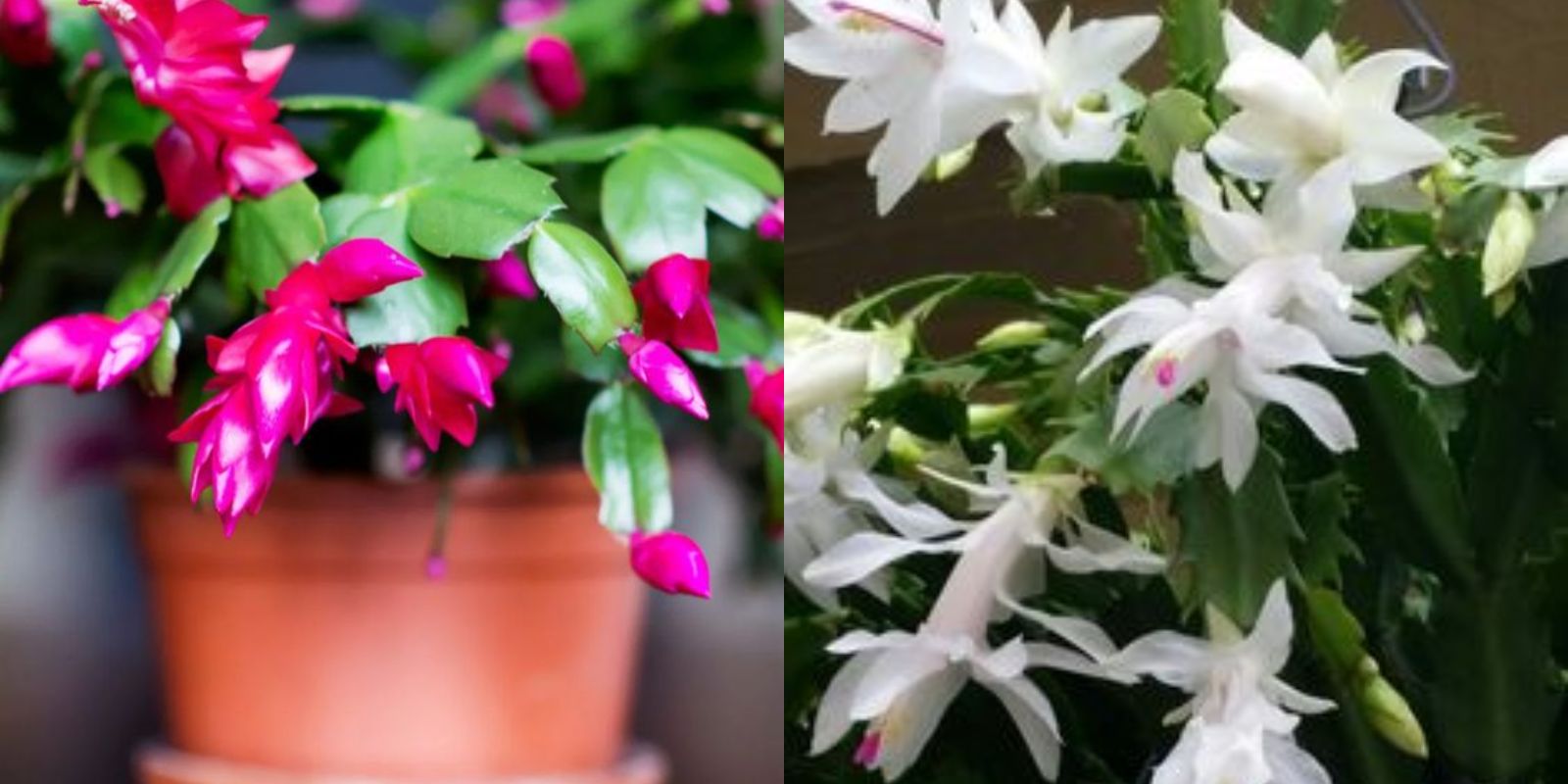The Christmas cactus, a popular holiday plant, brings vibrant color and festive cheer to homes during the winter season. Unlike many other cacti, the Christmas cactus (Schlumbergera spp.) is a tropical plant with unique care requirements. Whether you’re looking to enhance blooming, propagate new plants, or simply identify your holiday cacti, this comprehensive guide will help you ensure your Christmas cactus thrives.
Introduction
The Christmas cactus is a cherished plant that blooms in late fall to early winter, making it a seasonal favorite. Its delicate, tubular flowers can range from pink and red to white and purple, adding a burst of color to the winter months. Proper care and attention to detail are essential for maximizing blooms, propagating new plants, and distinguishing it from other holiday cacti. This article will provide you with all the information you need to keep your Christmas cactus healthy and vibrant.
Proper Care for Your Christmas Cactus
1. Light Requirements
Christmas cacti thrive in bright, indirect light. Direct sunlight can scorch their leaves and cause them to drop. Ideal locations include east or west-facing windows where they can receive gentle morning or afternoon light.
Tips:
- Rotate the plant regularly to ensure even growth on all sides.
- If natural light is insufficient, consider using grow lights to supplement.
2. Watering
Maintaining the right moisture level is crucial for Christmas cacti. They prefer consistently moist soil but are sensitive to overwatering, which can lead to root rot.
Steps:
- Water the plant when the top inch of soil feels dry.
- Ensure that the pot has good drainage to prevent water from sitting at the bottom.
- Reduce watering frequency during the winter months when the cactus is not actively growing.
3. Temperature and Humidity
Christmas cacti are native to the tropical rainforests of Brazil and prefer cooler temperatures compared to other cacti.
Recommendations:
- Keep the temperature between 60-70°F (15-21°C) during the day and slightly cooler at night.
- Maintain moderate humidity. You can place the pot on a humidity tray or use a room humidifier to ensure the plant’s comfort.
4. Fertilization
Fertilizing your Christmas cactus helps promote healthy growth and abundant blooms.
Guidelines:
- Use a balanced, water-soluble fertilizer every 2-4 weeks during the growing season (spring and summer).
- Avoid fertilizing during the fall and winter when the plant is preparing to bloom.
Encouraging More Blooms
1. Light and Temperature Adjustments
To encourage blooming, it’s essential to mimic the cactus’s natural environment.
Steps:
- Reduce watering slightly in the weeks leading up to the expected bloom time.
- Lower the temperature to about 60-65°F (15-18°C) during the night for several weeks. This cooling period helps trigger the blooming process.
2. Pruning
Pruning can help increase the number of blooms and maintain the plant’s shape.
Tips:
- After the blooming period, prune the plant by pinching off a few segments. This encourages branching and more blooms in the future.
- Pruning should be done in late winter or early spring.
Propagating Christmas Cacti
1. Taking Cuttings
Propagation of Christmas cacti is straightforward and can be done through cuttings.
Steps:
- Select healthy segments from the cactus, preferably with at least 2-3 segments.
- Twist the segments off the plant, allowing them to dry for 1-2 days to form a callous over the cut ends.
2. Planting Cuttings
Once the cuttings are ready, it’s time to plant them.
Steps:
- Prepare a pot with a well-draining potting mix, such as a blend of peat moss and perlite.
- Insert the calloused end of the cutting into the soil, about an inch deep.
- Water lightly and keep the soil consistently moist, but not soggy.
- Place the pot in bright, indirect light and maintain a temperature of 70-75°F (21-24°C) to encourage rooting.
3. Caring for New Plants
Newly propagated plants will need care similar to mature plants.
Tips:
- Avoid fertilizing until the new plant has established roots and shows signs of growth.
- Gradually acclimate the new plant to its environment by slowly increasing light exposure and adjusting watering as needed.
Identifying Christmas Cacti
1. Distinguishing Features
Christmas cacti are often confused with other holiday cacti, such as the Thanksgiving cactus (Schlumbergera truncata) and Easter cactus (Rhipsalidopsis spp.).
Characteristics:
- Christmas Cactus (Schlumbergera spp.): Has rounded, smooth-edged segments and blooms in December. Flowers are typically tubular.
- Thanksgiving Cactus (Schlumbergera truncata): Features pointed, serrated leaf segments and blooms in late November. Flowers are usually more angular.
- Easter Cactus (Rhipsalidopsis spp.): Displays leaf segments with more pronounced teeth and blooms in spring. The flowers are often wider and more spread out.
2. Flowering Patterns
The timing and shape of the flowers can also help with identification.
Tips:
- Observe the bloom time and flower shape to help determine which type of holiday cactus you have.
- Compare the plant’s features with descriptions and images online for accurate identification.
Conclusion
Caring for a Christmas cactus involves understanding its unique needs and providing appropriate care. By ensuring the right light, temperature, and watering practices, you can enjoy vibrant blooms and a healthy plant throughout the holiday season. Propagating new plants and identifying different types of holiday cacti can further enhance your gardening experience.
Motivation: With a little attention and the right care techniques, your Christmas cactus can become a stunning centerpiece during the holidays and beyond. Embrace these tips to cultivate a flourishing plant that will bring joy and color to your home year after year. 🎄

